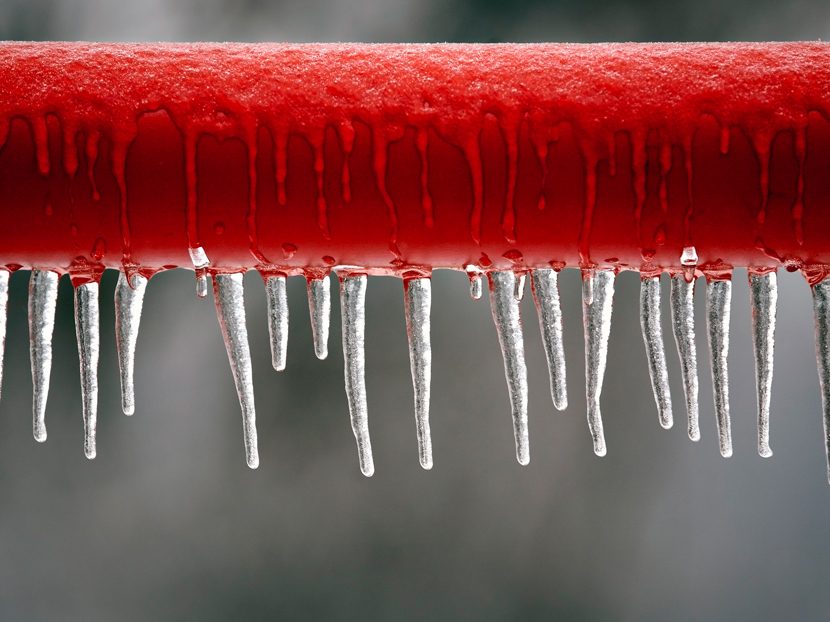Handling a Frozen AC Pipe - Guidance for Resolving the Issue
Handling a Frozen AC Pipe - Guidance for Resolving the Issue
Blog Article
The publisher is making several great pointers on How can I fix an air conditioner’s frozen pipe? in general in this article in the next paragraphs.

Intro
Discovering that your a/c pipe is frozen can be concerning, specifically throughout warm summertime when you rely on your air conditioning system one of the most. Recognizing what to do in such a circumstance is essential to stop additional damages to your air conditioning system and guarantee your comfort indoors.
Comprehending the Causes
Several aspects can add to the cold of an AC pipe. Recognizing these reasons can aid you deal with the concern effectively.
Lack of Airflow
One common reason for an icy air conditioner pipe is inadequate airflow. When the air movement over the evaporator coil is restricted, it can create the coil to drop below freezing temperature level, resulting in ice development on the pipe.
Reduced Refrigerant Levels
Inadequate refrigerant levels in your air conditioner system can additionally result in a frozen pipeline. Low refrigerant degrees can trigger the stress in the system to drop, resulting in the cold of dampness on the evaporator coil.
Winter Conditions
In cooler environments, freezing temperatures outside can contribute to the freezing of air conditioning pipes. If your a/c device is not properly insulated or if there are leakages in the ductwork, chilly air can infiltrate the system, creating the pipe to ice up.
Dirty Air Filters
Unclean or blocked air filters can restrict airflow in your air conditioning system, causing different problems, consisting of a frozen pipe. It's important to change or clean your air filters regularly to make certain correct air flow and protect against ice buildup.
Indicators of a Frozen Air Conditioning Pipe
Recognizing the signs of an icy a/c pipeline is essential for timely action.
Decreased Airflow
If you notice a considerable decrease in air movement from your vents, it can suggest a frozen pipeline.
Ice Buildup on the Pipe
Noticeable ice build-up on the refrigerant line or the evaporator coil is a clear sign of an icy air conditioner pipeline.
Odd Sounds from the Unit
Uncommon audios, such as hissing or bubbling, originating from your a/c unit can signal that there's ice present on the pipeline.
Immediate Actions to Take
When confronted with an icy air conditioner pipe, it's necessary to act rapidly to avoid additional damage to your cooling system.
Shutting off the a/c
The very first step is to turn off your ac system to stop the system from running and worsening the problem.
Looking for Blockages
Check the location around the interior unit for any type of blockages that might be blocking air flow, such as furniture or drapes.
Thawing the Pipe
You can make use of gentle methods like putting towels soaked in warm water around the frozen pipeline to help thaw it slowly.
Preventive Measures
Taking preventive measures can aid prevent future occurrences of a frozen air conditioner pipe.
When DIY Methods Fail
If your efforts to thaw the pipeline or address other issues are unsuccessful, it's time to call in an expert.
Significance of Hiring a Professional HVAC Technician
A certified HVAC specialist has the competence and tools essential to detect and fix issues with your a/c system securely and efficiently.
Normal Maintenance Checks
Schedule routine maintenance checks with a specialist HVAC professional to guarantee that your air conditioner system is running successfully.
Transforming Air Filters
Consistently replace or clean your air filters to avoid air movement constraints and keep optimal performance.
Shielding Exposed Pipes
If your a/c pipes are subjected to cold temperatures, think about shielding them to avoid freezing throughout winter months.
Seeking Professional Help
If DIY techniques fail to fix the issue or if you're unsure regarding just how to continue, it's ideal to look for assistance from a qualified HVAC service technician.
Final thought
Taking care of an icy AC pipeline can be an irritating experience, however understanding exactly how to respond can help minimize damages and bring back convenience to your home. By comprehending the causes, recognizing the indicators, and taking timely action, you can efficiently address the problem and avoid future occurrences.
Frozen AC Line: Why It Happens & What To Do About It
A frozen AC line can be a rather peculiar sight in a place like Phoenix, Arizona where nothing ever freezes. In this post, we’ll discuss what makes an air conditioner line frozen – and what you can do about it.
Dirty Air Filters
Did you know that you should be cleaning or replacing your air filters on a monthly basis? Failing to do this can result in airflow issues that, in turn, cause your evaporator coils and lines to freeze over. You’ll notice a buildup of ice on both components, although the buildup on your pipes will, of course, be more evident unless you open your air condition up to reveal the coils.
What To Do About It
Give your air filter a good cleaning if it’s reusable. If not, replace the filter outright. Next, switch your air conditioner’s fan setting on and leave it there for 2-3 hours. This will draw warm air in, helping to thaw your evaporator coil. You can also check out this article for some tips on cleaning the coils themselves if you’d like to speed the process up. Before you switch the unit back to its normal state, make sure the supply vents are completely unobstructed and free of dust or other debris.
If you keep having this issue even after replacing your filters regularly, contact a local HVAC repair company and have them inspect your evaporator coil, ductwork, and any other components that may be at fault. If you live in the Phoenix, Arizona area, give American Home Water and Air a call.
Low Refrigerant Levels/Leakage
What To Do About It
Contrary to what air conditioner “recharge” companies often tell their clients about refrigerant, it should never need to be simply refilled. You see, refrigerant runs in what experts refer to as a “closed loop.” Refrigerant really shouldn’t be leaving that loop. If it is, you’ve got a leak.
Paying someone to come and pump more refrigerant into your system (aka “recharge” it) isn’t the solution. Doing that will simply kick the can down the road. Besides, refrigerant leaks can be harmful to the environment and people in your home.
Rather, you need to take care of the leak with the help of a technician. Check out this article for some more information about dealing with air conditioners that are leaking refrigerant. Before you contact a technician, switch your thermostat to the off position. Then, switch the fan setting on and let it run for 2-3 hours so the unit can thaw.
Improper Temperature Setting
Improper temperature settings can also cause a drop in your air conditioner’s pressure. What many people don’t realize is that air conditioners are actually designed to run when temperatures have fallen above roughly 60 degrees Fahrenheit. If you run the unit when it’s cold outside, you’ll run into many issues, including frozen components.

Do you enjoy reading about What Do I Do If My AC Pipe Is Frozen? Give a remark down below. We would be interested to know your insights about this write up. In hopes that you come back again in the future. Loved our write-up? Please share it. Help another person check it out. Thanks so much for taking the time to read it.
Click Here Report this page